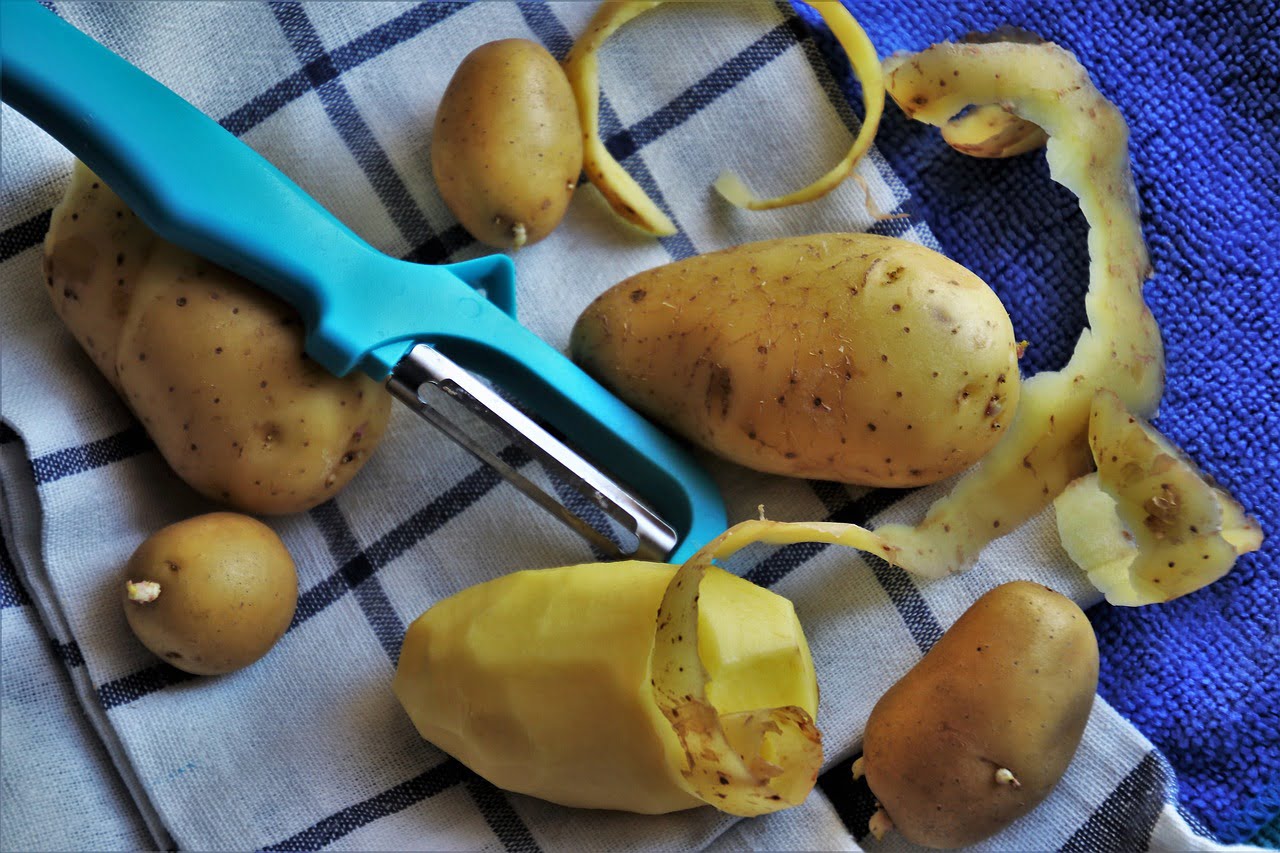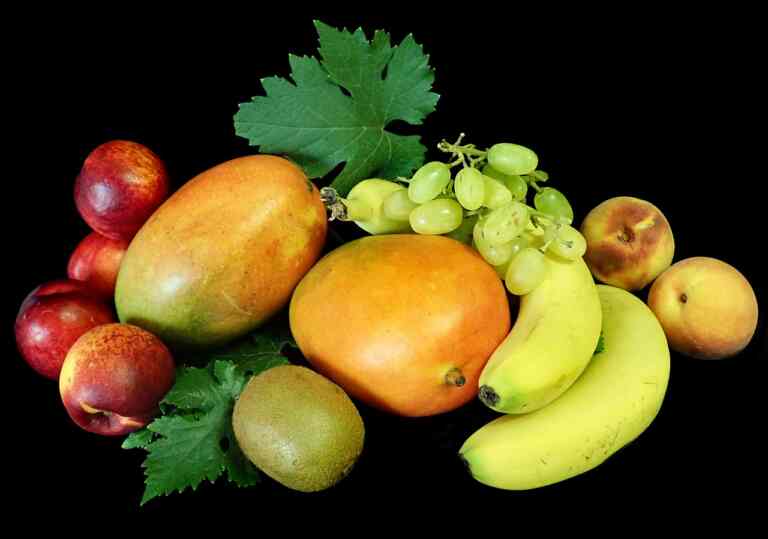Can we eat potato skins?
Can we eat potato skins? Yes, potato skins are edible and safe to eat. Potato skins contain valuable nutrients and dietary fiber, making them a nutritious part of the potato. However, whether you choose to eat them or not is a matter of personal preference. Potato skins can be consumed in various culinary preparations and are often used in dishes like baked potatoes, potato wedges, or as a crunchy topping for loaded baked potatoes.
They can add texture, flavor, and valuable nutrients to your meals. When consuming potato skins, it’s essential to wash the potatoes thoroughly to remove any dirt or contaminants and ensure they are properly cooked.
Nutritional Value of Potato Skins
Potato skins are packed with essential nutrients and dietary fiber, making them a valuable part of the potato. Here’s a breakdown of the nutritional value of potato skins:
- Dietary Fiber: Potato skins are rich in dietary fiber, particularly insoluble fiber. Fiber is essential for digestive health, promoting regular bowel movements and preventing constipation.
- Vitamins: Potato skins contain essential vitamins, including vitamin C, vitamin B6, niacin (vitamin B3), and folate (vitamin B9). These vitamins play various roles in supporting overall health, including immune function and energy metabolism.
- Minerals: They provide minerals like potassium, which is crucial for maintaining proper muscle and nerve function, regulating blood pressure, and balancing fluid levels in the body.
- Antioxidants: Potato skins contain antioxidants, including flavonoids and carotenoids, which help protect your cells from oxidative damage caused by free radicals. Antioxidants are associated with reducing the risk of chronic diseases and promoting overall well-being.
- Phytonutrients: Potato skins also contain phytonutrients like chlorogenic acid, which may have anti-inflammatory and antioxidant properties.
- Low in Calories: Potato skins are relatively low in calories, making them a suitable addition to a calorie-conscious diet.
- Protein: While not a significant source of protein, potato skins contain small amounts that can contribute to your daily protein intake.
- Vitamin K: Potato skins contain vitamin K, which plays a role in blood clotting and bone health.
- Iron: They provide a small amount of iron, which is essential for transporting oxygen in the blood and supporting overall energy levels.
It’s important to note that the specific nutritional content of potato skins may vary depending on factors like the potato variety and cooking method. Nevertheless, potato skins are a nutrient-rich part of the potato and can be a healthy addition to your diet when prepared and cooked appropriately.
Benefits of Eating Potato Skins
Eating potato skins can offer several health benefits due to their rich nutritional profile. Here are some of the potential advantages of incorporating potato skins into your diet:
- Dietary Fiber: Potato skins are an excellent source of dietary fiber, which promotes digestive health. Fiber adds bulk to stool, preventing constipation, and supporting regular bowel movements.
- Nutrient Density: Potato skins are packed with essential nutrients, including vitamins (e.g., vitamin C and B vitamins) and minerals (e.g., potassium and iron). These nutrients are vital for overall health and well-being.
- Antioxidant Protection: The presence of antioxidants in potato skins, such as flavonoids and carotenoids, can help combat oxidative stress and reduce the risk of chronic diseases by neutralizing harmful free radicals.
- Weight Management: The fiber content in potato skins contributes to a feeling of fullness and satiety, which can aid in weight management by reducing overall calorie intake and preventing overeating.
- Blood Pressure Regulation: Potassium is an essential mineral found in potato skins. Adequate potassium intake can help regulate blood pressure, lower the risk of hypertension, and support cardiovascular health.
- Immune Support: The vitamin C content in potato skins plays a crucial role in immune system function. Consuming vitamin C-rich foods can help strengthen your immune system and protect against infections.
- Bone Health: Vitamin K, found in potato skins, is important for bone health as it assists in calcium absorption and bone mineralization.
- Energy Production: B vitamins, including vitamin B6 and niacin (B3), play a role in energy metabolism, helping your body convert food into energy for various physiological functions.
- Reduced Risk of Chronic Diseases: Regular consumption of antioxidant-rich foods like potato skins may contribute to a lower risk of chronic diseases, including heart disease, certain cancers, and diabetes.
- Skin Health: Antioxidants and vitamin C in potato skins can promote healthy skin by protecting it from oxidative damage and supporting collagen production.
- Lowered Cholesterol: The soluble fiber found in potato skins may help lower cholesterol levels by binding to cholesterol in the digestive tract and aiding in its elimination from the body.
- Balanced Blood Sugar: Fiber in potato skins can help stabilize blood sugar levels and prevent rapid spikes and crashes, which is beneficial for individuals with diabetes or those at risk of developing the condition.
Incorporating potato skins into your meals can be a delicious and nutritious way to reap these benefits. However, it’s important to cook and prepare them properly to maximize their nutritional value and palatability.

Risks and Considerations
While there are many benefits to eating potato skins, there are also some risks and considerations to keep in mind:
- Pesticide Residues: Conventionally grown potatoes may contain pesticide residues on the skin. It’s advisable to choose organic potatoes or wash and peel conventionally grown potatoes thoroughly to minimize this risk.
- Digestive Sensitivity: The high fiber content in potato skins can be beneficial for most people but may cause digestive discomfort, such as gas or bloating, in some individuals, especially if consumed in large quantities.
- Allergies: Some individuals may have allergies or sensitivities to specific components in potatoes, including the skin. Allergic reactions to potatoes are rare but can occur.
- Glycoalkaloids: Potato skins contain glycoalkaloids, natural compounds that are mildly toxic in large amounts. While the levels of glycoalkaloids in potato skins are typically low, it’s essential not to consume green or sprouted potatoes, as they can contain higher levels of these toxins.
- Cooking Methods: The method of cooking potato skins can significantly impact their taste and texture. While some people enjoy the texture of crispy, roasted skins, others may find them tough. Adjust cooking methods to your preferences.
- Portion Control: Like any food, it’s important to consume potato skins in moderation, as excessive intake can lead to an imbalanced diet or gastrointestinal discomfort.
- Individual Preferences: Some individuals may prefer not to eat potato skins due to their texture, taste, or personal preferences. Whether to include them in your diet is ultimately a matter of choice.
To minimize potential risks and make the most of the nutritional benefits of potato skins, it’s essential to wash and prepare them properly, choose potatoes that align with your preferences and dietary requirements, and be mindful of portion sizes. If you have known food allergies or sensitivities, consult with a healthcare professional before incorporating potato skins into your diet.
Preparing and Cooking Potato Skins
Preparing and cooking potato skins can be a delicious and nutritious addition to your meals. Here’s how to do it:
1. Choose the Right Potatoes:
- Start by selecting fresh, unblemished potatoes. Organic potatoes or those labeled for cooking or baking are good choices.
2. Wash Thoroughly:
- Rinse the potatoes under cold running water to remove any dirt or contaminants. Use a scrubbing brush or cloth to ensure they are clean. It’s essential to wash them even if you plan to peel them.
3. Peel or Leave the Skin:
- You have the option to either peel the potatoes or leave the skin intact, depending on your preference and the recipe. If keeping the skin, make sure it’s thoroughly cleaned.
4. Cut or Slice:
- Cut or slice the potatoes as needed for your recipe. For potato skins, you can cut them into thin strips, wedges, or smaller pieces.
5. Cooking Methods:
- Roasting: Toss the cleaned and cut potato skins with olive oil, salt, and your preferred seasonings. Spread them on a baking sheet and roast in a preheated oven at 375°F (190°C) for about 15-20 minutes or until they become crispy and golden brown.
- Frying: Heat vegetable oil in a pan and fry the potato skins until they are golden and crispy. Drain excess oil on paper towels.
- Boiling: Boiling potato skins until they are tender can be a good option if you plan to use them in soups, stews, or mashed potatoes.
6. Season and Serve:
- Once cooked, season the potato skins with your favorite spices, herbs, or seasonings. Popular choices include garlic powder, paprika, cayenne pepper, or grated Parmesan cheese.
- Serve the potato skins as a side dish, appetizer, or garnish for various main courses.
7. Creative Uses:
- Potato skins are versatile and can be used as a base for toppings like cheese, sour cream, chives, bacon bits, or chili for loaded potato skins.
8. Enjoy: Enjoy your crispy and flavorful potato skins as a tasty and nutrient-rich addition to your meal.
Remember that the cooking method can significantly impact the taste and texture of potato skins. Experiment with different seasonings and cooking techniques to find the preparation style that suits your taste preferences.
Frequently Asked Questions About Potato Skins
“Frequently Asked Questions About Potato Skins” is a section that provides answers to common queries and concerns regarding the consumption and preparation of potato skins. Here are some frequently asked questions and their answers:
1. Are potato skins safe to eat?
- Yes, potato skins are safe to eat, provided they are properly washed and cooked. Removing any dirt or contaminants is essential.
2. Are potato skins nutritious?
- Yes, potato skins are highly nutritious and rich in dietary fiber, vitamins, minerals, and antioxidants.
3. Do I need to peel potatoes before cooking?
- Whether to peel potatoes or not depends on your preference and the recipe. Potato skins are edible and offer nutritional benefits, so you can leave them on if desired.
4. Can I eat potato skins raw?
- While you can technically eat potato skins raw, they are typically cooked to improve their taste and texture.
5. How do I prepare and cook potato skins?
- To prepare potato skins, wash, cut, and cook them using methods like roasting, frying, or boiling. Season as desired and enjoy.
6. What are the health benefits of potato skins?
- Potato skins offer health benefits, including dietary fiber for digestive health, vitamins for immune support, and antioxidants for overall well-being.
7. Can I eat potato skins if I have allergies or sensitivities?
- If you have known food allergies or sensitivities related to potatoes, it’s advisable to consult with a healthcare professional before including potato skins in your diet.
Conclusion: Making Informed Choices About Potato Skins in Your Diet
In conclusion, making informed choices about including potato skins in your diet involves considering their nutritional benefits, potential risks, and your personal preferences. Potato skins are indeed safe to eat and offer a range of health advantages due to their rich nutrient content.
The benefits of consuming potato skins include increased dietary fiber intake, essential vitamins and minerals, antioxidant protection, and support for digestive health. They can be a valuable addition to your meals when prepared and cooked properly.
However, it’s essential to be aware of potential risks, such as pesticide residues on conventionally grown potatoes and individual sensitivities to the skin’s texture or taste. Additionally, green or sprouted potatoes should be avoided due to higher levels of glycoalkaloids.
Whether to eat potato skins or not is a matter of personal preference. They can be left intact for added nutrition and flavor, or you can choose to peel them based on your culinary preferences and specific recipes.
By following proper washing and cooking techniques, experimenting with seasonings, and being mindful of portion control, you can make the most of the nutritional benefits of potato skins while enjoying their unique taste and texture. Ultimately, the choice to include potato skins in your diet should align with your dietary goals and individual tastes.
Related Posts
This article is reviewed by Russel, before publishing. If you have any doubt, you can contact us or consult with your nearby doctor. Remember, in medical matters, there is no same advice, cure, and medicine for all.







